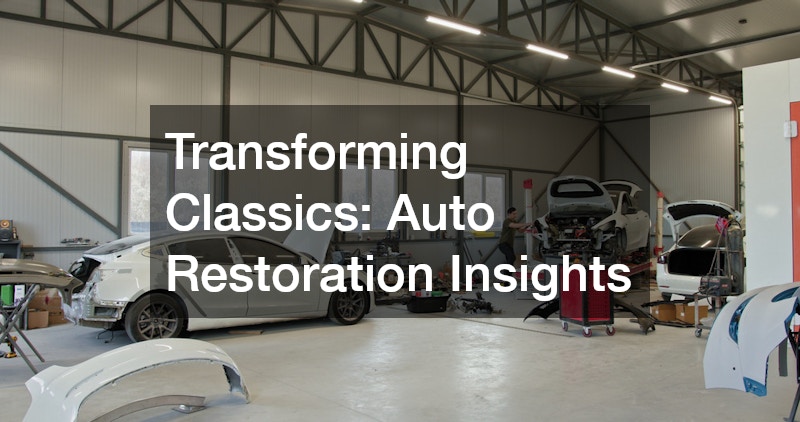
Auto restoration is a captivating blend of art, engineering, and love for classic vehicles. Many enthusiasts take on the challenge of restoring cars from different eras, aiming to bring back their former glory. From vintage muscle cars to elegant classics, the process not only revives these machines but also preserves their history. As individuals embark on their restoration journey, several key insights can guide them along the way.
Video Source
This article dives into the essential elements of auto restoration, shedding light on techniques, planning, and the restoration community.
The first step in the auto restoration journey is understanding the restoration process itself. Auto restoration can be broken down into stages, including disassembly, repair, refinishing, and reassembly. Each of these stages requires meticulous attention to detail and an understanding of the vehicle's history and mechanics. A well-planned approach can significantly influence the outcome of the project, including time spent and overall costs involved. As one embarks on this endeavor, it’s crucial to assess the project’s scope to make informed decisions moving forward.
The initial phase often involves a thorough assessment of the vehicle’s condition. Before disassembling any parts, it’s advisable to document the current state through photographs and notes. This historical record will serve as a reference when putting the vehicle back together. It may also help identify which parts can be reused and what must be replaced. This foresight can save time and resources, making the restoration process smoother.
Once the assessment is complete, the disassembly stage can begin. Carefully removing parts such as the engine, transmission, and body panels should be done methodically to avoid damaging components. A good practice is to label and store parts systematically. This organization will prove invaluable during the reassembly stage when every piece must be put back in its rightful place. Following this initial phase, planning for repairs and refinishing can commence, two crucial components of successful auto restoration.
Restoring a classic car calls for a variety of technical skills and techniques. Welding, for instance, is often essential for repairing rusty panels or structural components. This skill allows restorers to replace damaged sections with new metal, maintaining the vehicle's integrity. Mastering welding techniques enables one to create clean, strong joints that can endure years of driving and wear. Such foundational skills are crucial as they help ensure the car will be both aesthetically pleasing and structurally sound.
Another critical technique is paint restoration. The finish of a car can significantly affect its aesthetic appeal, and choosing the right paint process is vital. Options range from traditional single-stage paint to modern multi-stage systems that can enhance depth and shine. Each choice has its pros and cons, and restorers should weigh factors such as durability, cost, and ease of application. A professional-quality finish not only looks stunning but can also protect the car's surface from degradation over time.
Mechanical restoration plays an equally important role in the process. Ensuring that the car runs smoothly is as important as its appearance. This involves dismantling, cleaning, and rebuilding engine components while paying attention to tolerances and clearances. Upgrading mechanical systems, such as brakes and suspension, can improve performance and safety, especially in older vehicles. Through these techniques, a well-rounded restoration not only revives the classic aesthetic but also enhances the driving experience.
Embarking on an auto restoration project can sometimes be overwhelming. Fortunately, a thriving community of enthusiasts exists to support and inspire restorers. Forums, social media groups, and local clubs offer advice and resources that can provide insights into tackling specific challenges. Sharing knowledge and experiences not only fosters camaraderie but can also make the restoration experience more enjoyable. Connecting with fellow enthusiasts can also lead to collaborative projects, which often yield better results.
In addition to community support, resources such as manuals, articles, and video tutorials are invaluable. These materials can provide step-by-step guidance on everything from engine overhauls to upholstery replacement. With the availability of online resources, restorers can easily access information tailored to specific car models or restoration techniques. Knowledge gained through these channels can bridge gaps and help avoid common pitfalls during the project. Leveraging these resources will ultimately save time and promote successful outcomes in auto restoration.
Lastly, attending car shows and restoration events can expand connections and deepen insights into the restoration world. Meeting experienced restorers and viewing completed projects in person can inspire creativity and motivation. Networking at these events can lead to discovering rare parts or acquiring tools at a discount. Observing firsthand how others approach restoration can also contribute to one’s skills and methods. The restoration community is filled with passionate individuals, making it an excellent environment for learning and growth.
